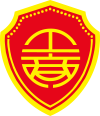- 收藏
- 加入书签
Analysis of the Reticular Structure in The Golden Notebook
1 Analysis of reticular structures
Under the serious circumstance,Doris Lessing wrote the monument book-The Golden Notebook.The book,a story of writer Anna Wulf,intersperses segments of an ostensibly realistic narrative of the lives of Molly and Anna,their children,ex-husbands and lovers-entitled Free Women-with excerpts from Anna’s four notebooks.
The black notebook records her writer’s life,especially her thinking on her maiden novel Frontiers of War.The black notebook concerns Anna’s recall and reflection of her time in Central Africa during World War II,and the events leading up to the writing of Frontiers of War.The red notebook records Anna’s political life.The yellow notebook is Anna’s novel named The Shadow of the Third which concerns her emotional life.It’s Anna’s novelistic attempt to see herself in perspective,by means of a thinly disguised fictional alter ego.In the blue notebook,Anna records her daily life to shape the Anna in reality.The inner golden notebook is the fifth one,in which Anna integrates the various experiences depicted separately in each notebook to attain wholeness of vision.
The Golden Notebook doesn’t have chapters or sections but consists of a conventional novel Free Women and five coloured notebooks of black,red,yellow,blue and golden in order.The Golden Notebook is the conclusion of the four coloured notebooks,we could better understand Free Women is the book written by Anna after her collapse only when we have read The Golden Notebook.If there are not the notebooks,it is impossible for us to learn something Anna’s past life-her politic ideal,her emotion,and her conscience as a writer.The four coloured notebooks,the inner golden notebook,and Free Women are the relative nodes in the novel’s net.Although Free Women totally implies traditional narrative methods,its plots carry out an undertaking from start to the end,while the logic of narration is coherent.Nevertheless,Lessing believes that this kind of coherence in meaning,and the concession of plots,and the unified characters would make a huge closeness in the course of writing.It neither reflects the chaotic and disordered world in reality,nor demonstrates Anna’s fragmented ego.Free Women is cut by notebooks featuring different colors,themes,and various writing features,and then she put these fragments into Free Women to weave a net-like structure for the book.
The conventional novel Free Women appears the four coloured notebooks in succession of black,red,yellow,and blue.This pattern repeats four times and after the fourth repeating,it comes Anna’s inner golden notebook,from which the whole book gets its name,and then the book is concluded with a final Free Women fragment.There is a formula to explain the complex structures of the novel: (1+4)+(1+4)+(1+4)+(1+4)+(1+1)=22.In the formula,figure 1 refers to one of the fragments of Free Women,and figure 4 refers to one of part of the four coloured notebooks,and the form of(1+4)repeats four times.The last one consists of one the last part of Free Women and the inner golden notebook.These fragments consist of The Golden Notebook.
2 Conclusion
According to Doris Lessing,Free Women and the four coloured notebooks are cut to fragments and form a reticular structure that is relative not only in horizon but vertex,so that it is possible to reflect and demonstrate the fragments of the society Lessing was living.The fragmented structure symbolizes that the world is on longer unified but parted.Her relationship and attempt to draw everything together in the golden notebook at the end of the novel are both the final stage of Anna’s intolerable mental breakdown,and her attempt to overcome the fragmentation and madness.
References
[1]Dorothy.Brewster,Doris Lessing.New York:Twayne Publishers,Inc,1965.
[2]Ella.Morgan,Alienation of Women Writer in the Golden Notebook.Doris Lessing:Critical Studies AnnisPratt and L.S.Dembo.Ed.The University of Wisconsin Press,1974.
[3]Jeannette king,Doris Lessing.Edward Arnold,1989.
[4]Jean pickering,Understanding Doris Lessing.Columbia:University of South Carolina Press,1990.
[5]Paul.Schlueter,The Novels of Doris Lessing,1969.
[6]Roberta.Rubenstein.The novelistic of visioin of Doris Lessing,University of Illinois Press,1979.
作者简介
李欣(1993—),女,汉族,甘肃省靖远县,硕士研究生,陕西师范大学,英语语言文学。






 京公网安备 11011302003690号
京公网安备 11011302003690号


